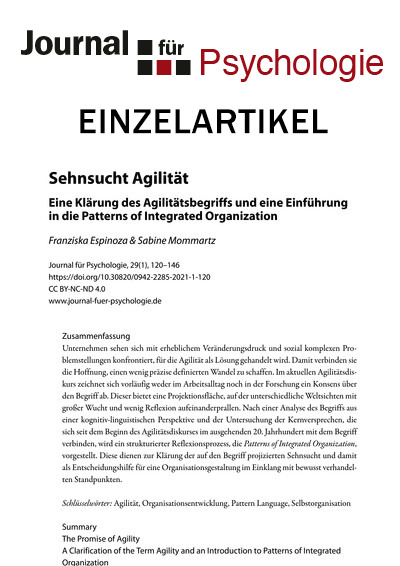The Promise of Agility
Eine Klärung des Agilitätsbegriffs und eine Einführung in die Patterns of Integrated Organization
DOI:
https://doi.org/10.30820/0942-2285-2021-1-120Keywords:
Agility, organizational development, Pattern Language, self-organizationAbstract
Companies are confronted with considerable pressure for change and socially complex problems, for both of which agility seems to promise remedy. By introducing agile structures, companies hope to bring about some change that is not defined with much precision. In the current agility discourse, there is no consensus about the term neither in everyday work nor in research. It offers a projection surface, where different worldviews collide with great force and little reflection. After a cognitive-linguistic analysis of the term in a historical context, a structured reflection process in the form of Patterns of Integrated Organization is presented, which serves to clarify the longing projected on the term and thus provides a decision-making tool for an organizational design in accordance with consciously negotiated points of view.
Downloads
Published
2021-06-10
How to Cite
Espinoza, Franziska, and Sabine Mommartz. 2021. “The Promise of Agility: Eine Klärung Des Agilitätsbegriffs Und Eine Einführung in Die Patterns of Integrated Organization”. Journal für Psychologie 29 (1):120-46. https://doi.org/10.30820/0942-2285-2021-1-120.
Issue
Section
Artikel
License
Copyright (c) 2021 Journal für Psychologie

This work is licensed under a Creative Commons Attribution-NonCommercial-NoDerivatives 4.0 International License.
This license allows private use and unmodified distribution, but prohibits editing and commercial use (further information can be found at: https://creativecommons.org/licenses/by-nc-nd/4.0/).
The terms of the Creative Commons licence only apply to the original material. The reuse of material from other sources (marked with a reference) such as charts, illustrations, photos and text extracts may require further permission for use from the respective copyrights holder.


